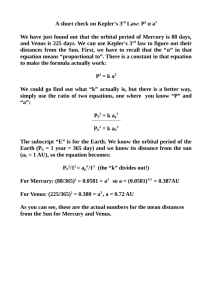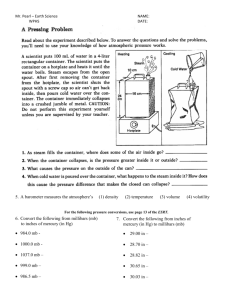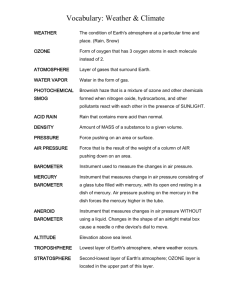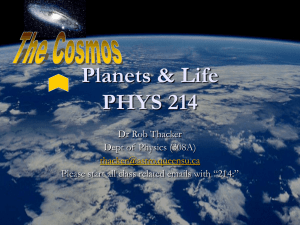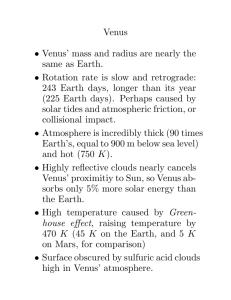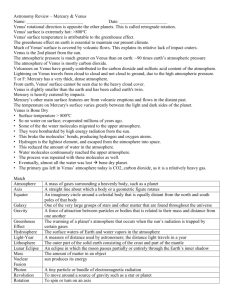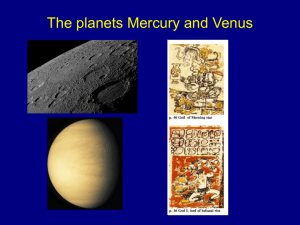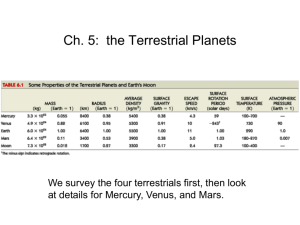1 The Planets Mercury and Venus 2 The Geology of Mercury
advertisement
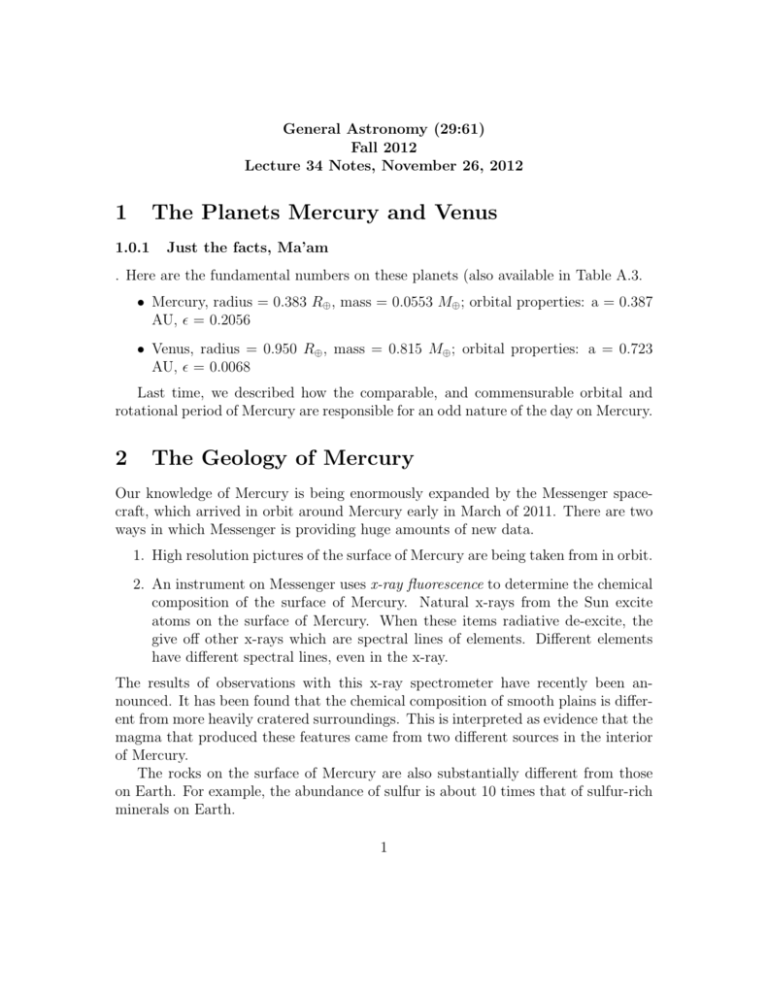
General Astronomy (29:61) Fall 2012 Lecture 34 Notes, November 26, 2012 1 The Planets Mercury and Venus 1.0.1 Just the facts, Ma’am . Here are the fundamental numbers on these planets (also available in Table A.3. • Mercury, radius = 0.383 R⊕ , mass = 0.0553 M⊕ ; orbital properties: a = 0.387 AU, = 0.2056 • Venus, radius = 0.950 R⊕ , mass = 0.815 M⊕ ; orbital properties: a = 0.723 AU, = 0.0068 Last time, we described how the comparable, and commensurable orbital and rotational period of Mercury are responsible for an odd nature of the day on Mercury. 2 The Geology of Mercury Our knowledge of Mercury is being enormously expanded by the Messenger spacecraft, which arrived in orbit around Mercury early in March of 2011. There are two ways in which Messenger is providing huge amounts of new data. 1. High resolution pictures of the surface of Mercury are being taken from in orbit. 2. An instrument on Messenger uses x-ray fluorescence to determine the chemical composition of the surface of Mercury. Natural x-rays from the Sun excite atoms on the surface of Mercury. When these items radiative de-excite, the give off other x-rays which are spectral lines of elements. Different elements have different spectral lines, even in the x-ray. The results of observations with this x-ray spectrometer have recently been announced. It has been found that the chemical composition of smooth plains is different from more heavily cratered surroundings. This is interpreted as evidence that the magma that produced these features came from two different sources in the interior of Mercury. The rocks on the surface of Mercury are also substantially different from those on Earth. For example, the abundance of sulfur is about 10 times that of sulfur-rich minerals on Earth. 1 3 The Planet Venus One of the most remarkable aspects of Venus is how similar it is to the Earth in its overall physical properties. −→ see basic properties on the online pictures and diagrams. 3.1 The Atmosphere of Venus Venus has a dense, hot, carbon dioxide atmosphere. The pressure at the surface of Venus is 92.5 atmospheres. The chemical composition is 96.5 % CO2, and 3.5 % N2. The books raises the point, “One intriguing question is why the atmospheres of Venus and Earth are so different from each other”. It is generally accepted that this difference is due to the presence of large amounts of liquid water, in the form of oceans, on the surface of the Earth. Carbon dioxide is dissolved in the oceans, and undergoes the following chemical reactions. CO2 + H2 O ⇔ H + + HCO3− Ca2+ + 2HCO3− ⇔ CO2 + H2 O + CaCO3 (1) (2) The end product of this is calcium carbonate, which is limestone. Essentially, this reaction takes 2 molecules of CO2 dissolved in the water and “permanently buries” one of them in limestone. There are estimates that the amount of CO2 which is locked up in limestone, dolomite, and other minerals, on the surface of the Earth, is equivalent to the amount of CO2 in the atmosphere of Venus. The existence of oceans has played a crucial role in the habitability of Earth by removing most of the CO2 from the atmosphere. The book has another way of expressing this intriguing fact. “If you could somehow remove the CO2 from the Venusian atmosphere, the remaining atmosphere, consisting mainly of nitrogen, would resemble the atmosphere of Earth prior to the emergence of photosynthesis”. 2
